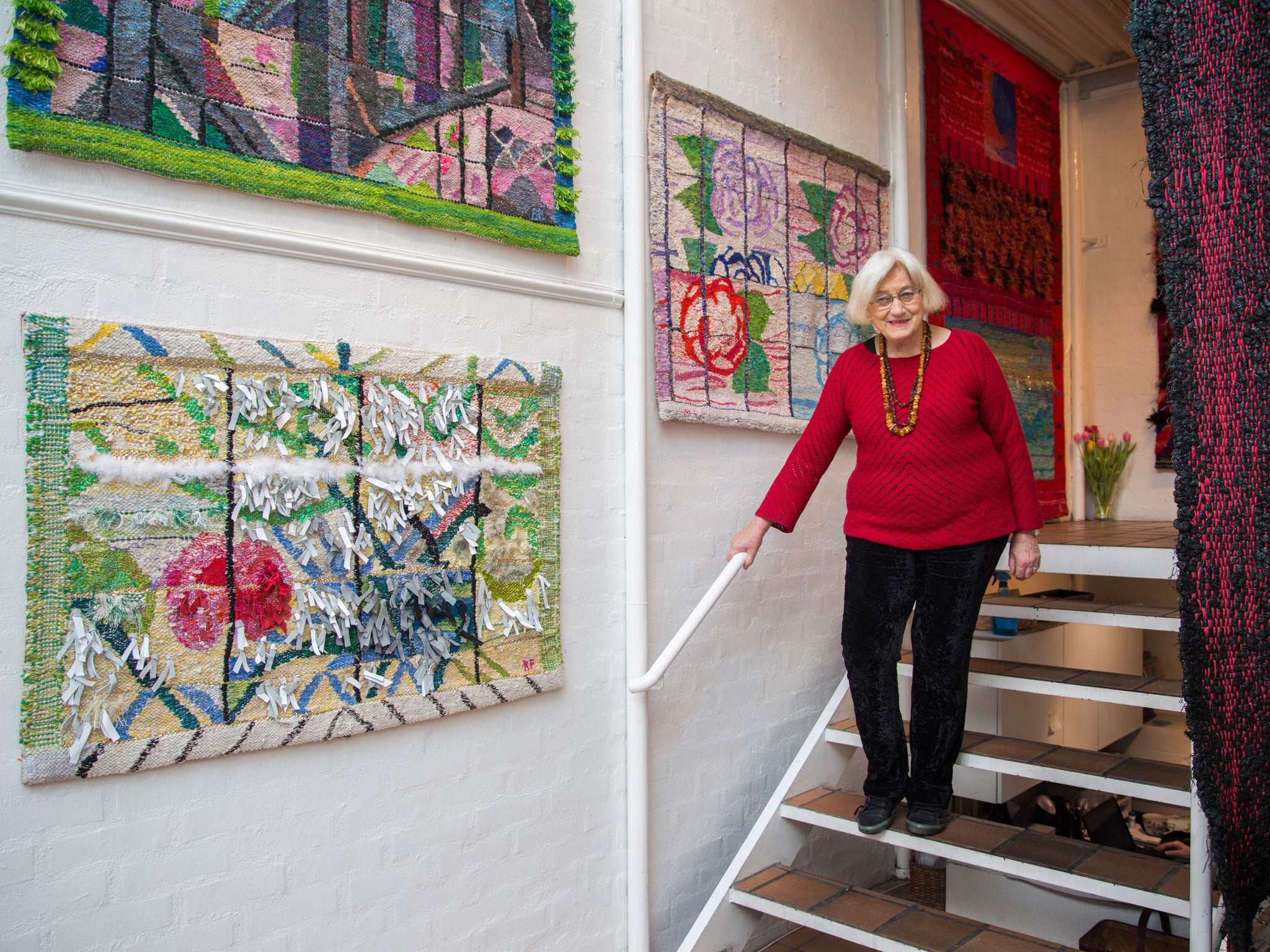Brit Fuglevaag, textile artist: 'The walls are covered with tapestries and paintings, all jostling for space'
Karen Wright meets the artist in her studio in north-west Oslo

Your support helps us to tell the story
From reproductive rights to climate change to Big Tech, The Independent is on the ground when the story is developing. Whether it's investigating the financials of Elon Musk's pro-Trump PAC or producing our latest documentary, 'The A Word', which shines a light on the American women fighting for reproductive rights, we know how important it is to parse out the facts from the messaging.
At such a critical moment in US history, we need reporters on the ground. Your donation allows us to keep sending journalists to speak to both sides of the story.
The Independent is trusted by Americans across the entire political spectrum. And unlike many other quality news outlets, we choose not to lock Americans out of our reporting and analysis with paywalls. We believe quality journalism should be available to everyone, paid for by those who can afford it.
Your support makes all the difference.Brit Fuglevaag lives and works in Frogner, a quiet area in north-west Oslo. "It's a rich part, it's quiet. And you have lots of shops and you have a centre." Her daughter, Maria Fuglevaag Warsinski, lived in this house until seven years ago when Fuglevaag moved back permanently from Paris. Maria now lives by the sea, and her mother shares this house with her looms, books and the paintings by her late husband. Fuglevaag also keeps a house in Italy where she continues to go to in the summer.
She was born in 1939 in Kirkenes but was raised in Trondheim, a community particularly known for its handcrafts. She studied first at the State Academy of the Arts School in Oslo before receiving a government grant to complete her studies at the Academy of Fine Arts in Warsaw. When she arrived in Poland she met Ryszard Warsinski, a painter whom she married and had Maria with.
The cosy house is a testimony to the industriousness of its owner. Walls are covered with colourful tapestries by herself and paintings by her late husband, all jostling for space. Although she is now in her late seventies she is not slowing down and has looms set up all over the house, even next to her bed, with various materials in baskets waiting to be incorporated into her weavings. She tells me "anything is weavable".
She works with Norwegian long-haired wool but is equally happy with plastic, raffia, newspaper and papier mâché. "Because I work all the time, if I have no loom or no materials then I find something."
Recently she came across some old drawings by her daughter from when she was 10. She recalls laughing that her daughter was very concerned that her mother was not using much colour so she made these colourful drawings for her. She photographed and adapted the drawings and made what is for Fuglevaag a traditional woollen tapestry, crediting her daughter as the co-author. "She is very pleased with the colourful tapestry."
There is a shaped work hanging on a stairway and I ask what it is made of. "It's rope. I bought it in France and I dyed it on an open fire, and I set up a temporary loom between the trees in Italy. I made three of them, the others sold but this one I keep because I have to have it."
Join our commenting forum
Join thought-provoking conversations, follow other Independent readers and see their replies
Comments